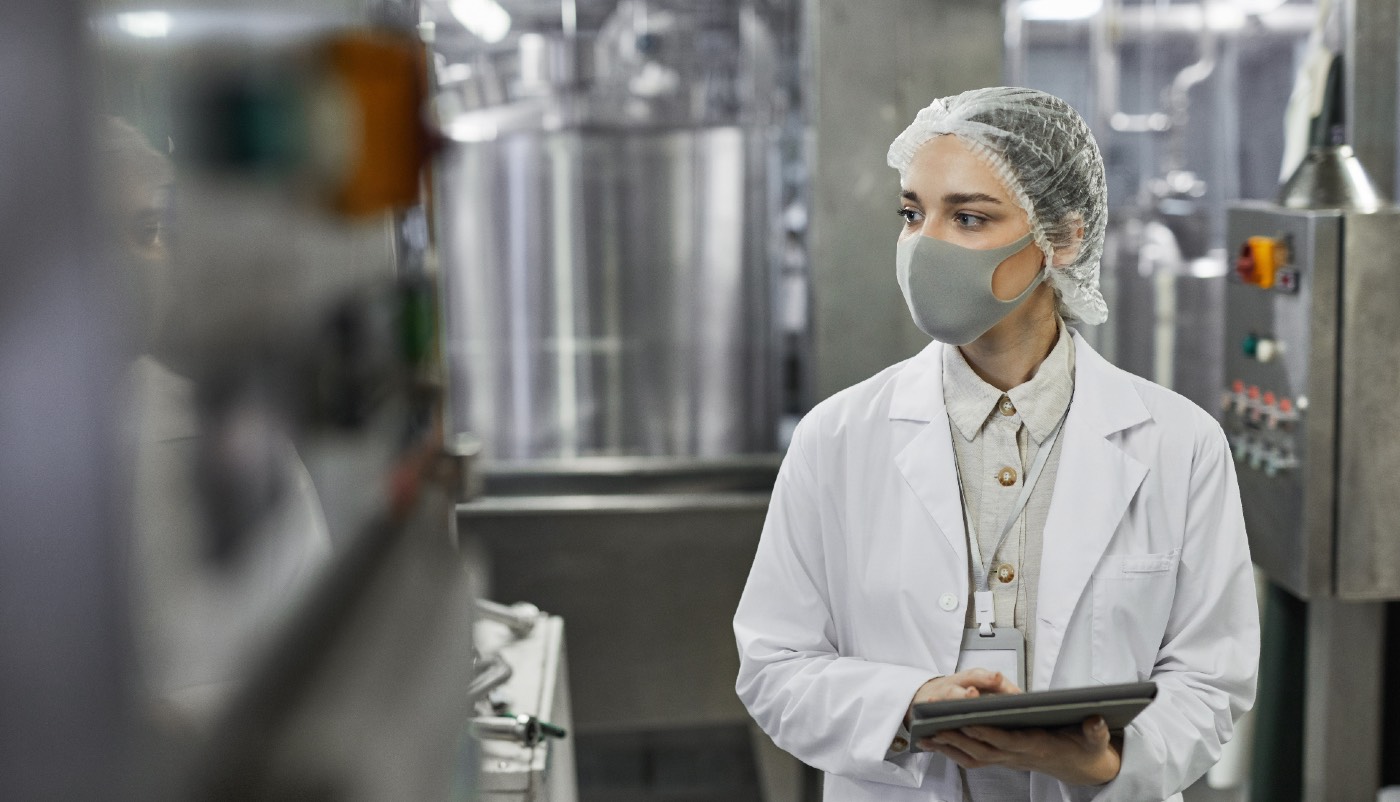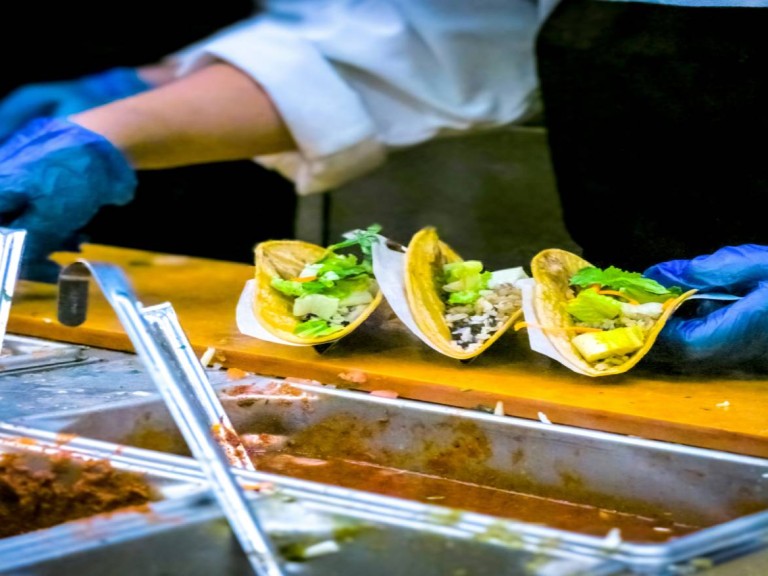Food Safety Management
A Food Safety Management System is a formal commitment by management to develop and maintain a series of programs and standards through policies and procedures that are implemented company-wide; they establish roles and responsibilities for the safe handling of food. The commitment is also financial and provides resources for food safety. The organization's most senior leaders sign a food safety policy and are displayed in a location for all employees to read.
Good Agricultural Practices (GAP) or Good Manufacturing Practices (GMP)
Hazard Analysis and Critical Control Point (HACCP)
Hazard Analysis is a globally recognized system that identifies, evaluates, controls and monitors, chemical, biological and physical hazards to food. Critical control points based in science and technical documents are implemented and verified throughout the processing of foods.
Prerequisite Programs
These food safety programs support the HACCP plan discussed above. Programs include cleaning and sanitation, pest control, supplier management, environmental monitoring, etc.
General requirements
So how does GFSI certification benefit you?
Farming of Plants (other than grains and pulses)
Growing or harvesting of plants, including horticultural products and hydrophytes for food. On-farm storage of plants, including horticultural products and hydrophytes for food.
Farming of Grains and Pulses
Growing or harvesting of grains and pulses for food on-farm storage of grains and pulses for food
Farming of Fish and Seafood
Raising of fish and seafood used for meat production. Growing, trapping, and fishing slaughtering at point of capture. Associated temporary farm packing without modification or processing of the product.
Farming of Animals for Meat/ Milk /Eggs / Honey
Raising of animals (other than fish and seafood) used for meat production, egg production, milk production, or honey production. Growing, keeping, trapping, and hunting (slaughtering at point of hunting) Associated temporary farm packing without modification or processing of the product.
Pre-process handling of plant products
Activities on harvested plants, including horticultural products and hydrophytes for food, keep the products whole and integral. Cleaning, washing, rinsing, fluming, sorting, grading, trimming, bundling, cooling, hydro-cooling, waxing, drenching, packing, repacking, staging, storing, loading / or any other handling activity that does not significantly transform the product from its original harvested form.
Animal primary conversion
Conversion of animal carcasses intended for further processing, including Lairage, slaughter, evisceration, bulk chilling, bulk freezing, bulk storage of animals and game Gutting, bulk freezing of fish, storage of game.
Processing of perishable animal products
Production (and packing) of animal products including: fish, seafood, meat, eggs, dairy, fish products, as well as perishable pet food from animal products only. Deboning, cutting, washing, trimming, grading, pasteurization, cooking, curing, fermentation, smoking, chilling, freezing, packed in modified atmosphere, packed in vacuum packing.
Processing of perishable plant products
Production of plant products, including fruits and fresh juices, vegetables, grains, nuts, pulses and perishable pet food from plant products only. Washing, slicing, dicing, cutting, shredding, peeling, grading, pasteurization, cooking, chilling, juicing, pressing, freezing, packing in modified atmosphere, packed in vacuum packing or any other activity that significantly transforms the product from its whole original state.
Processing of perishable animal and plant products (mixed products)
Production of mixed animal and plant products, including ready-to-eat and perishable pet food. Mixing, cooking, chilling, freezing, packing in modified atmosphere, packed in vacuum packing.
Processing of ambient stable animal and plant products (mixed products)
Production of food products from any source stored and sold at ambient temperature, including canned food and ambient stable pet food. Aseptic filling, baking, bottling, brewing, canning, cooking, distilling, drying, extrusion, fermentation, freeze-drying, pressing, frying, hot filling, irradiating, milling, mixing and blending, packing in modified atmosphere, packed in vacuum packing, pasteurizing, pickling, roasting, salting and refining.
Production of feed
Production of feed from a single or mixed food source, intended for food-producing animals. Cooking, milling, mixing and blending, and extrusion.
Catering
Preparation, storage and, where appropriate, delivery of food products for consumption at the place of preparation or at a satellite unit. Cooking, mixing and blending, preparation of component products.
Retail / Wholesale
Buying and selling of food, feed, and/ or packaging products to a customer, including minor processing activities in counters when this is not the main activity of the business.
Food Broker / Agent
Buying and selling food, feed, and/or packaging products, excluding the production, storage and any physical handling of the product.
Provision of Food Safety Services
Provision of services related to the safe production of food, feed and/ or packaging, including water supply, pest control, cleaning services, waste disposal.
Provision of Storage and Distribution Services
Storage facilities and distribution vehicles for the storage and transport of food, feed and/ or packaging products. Note: any packing with labeling activities are excluded.
Production of Food Packaging
Production of food and feed packaging materials. Packaging components in the form of raw materials, partly processed, semi converted, converted, or fully finished packaging materials and products for use in the supply chain.
Hygienic Design of Food Buildings and Processing Equipment (for building constructors and equipment manufacturers)
Manufacturers of equipment, including any components necessary to link them together, and their utilities and utensils needed for their operation, for farms food production facilities, food retail and wholesale operations, and packaging dedicated to food; Architects, Engineers, and Designers of food handling facilities, including farm, food manufacturing, storage, and retail buildings; The builders of above facilities.
Hygienic Design of Food Buildings and Processing Equipment (for building and equipment users)
Specifying, purchasing, design and construction of buildings or refurbishments by farmers, food manufacturers, wholesalers and retailers, and packaging manufacturers for their use; specifying, purchasing, design, and construction of equipment, including any components necessary to link them together, and their utilities and utensils needed for their operation, and facilities by farmers, food manufacturers, wholesalers and retailers, and packaging manufacturers for their use.





